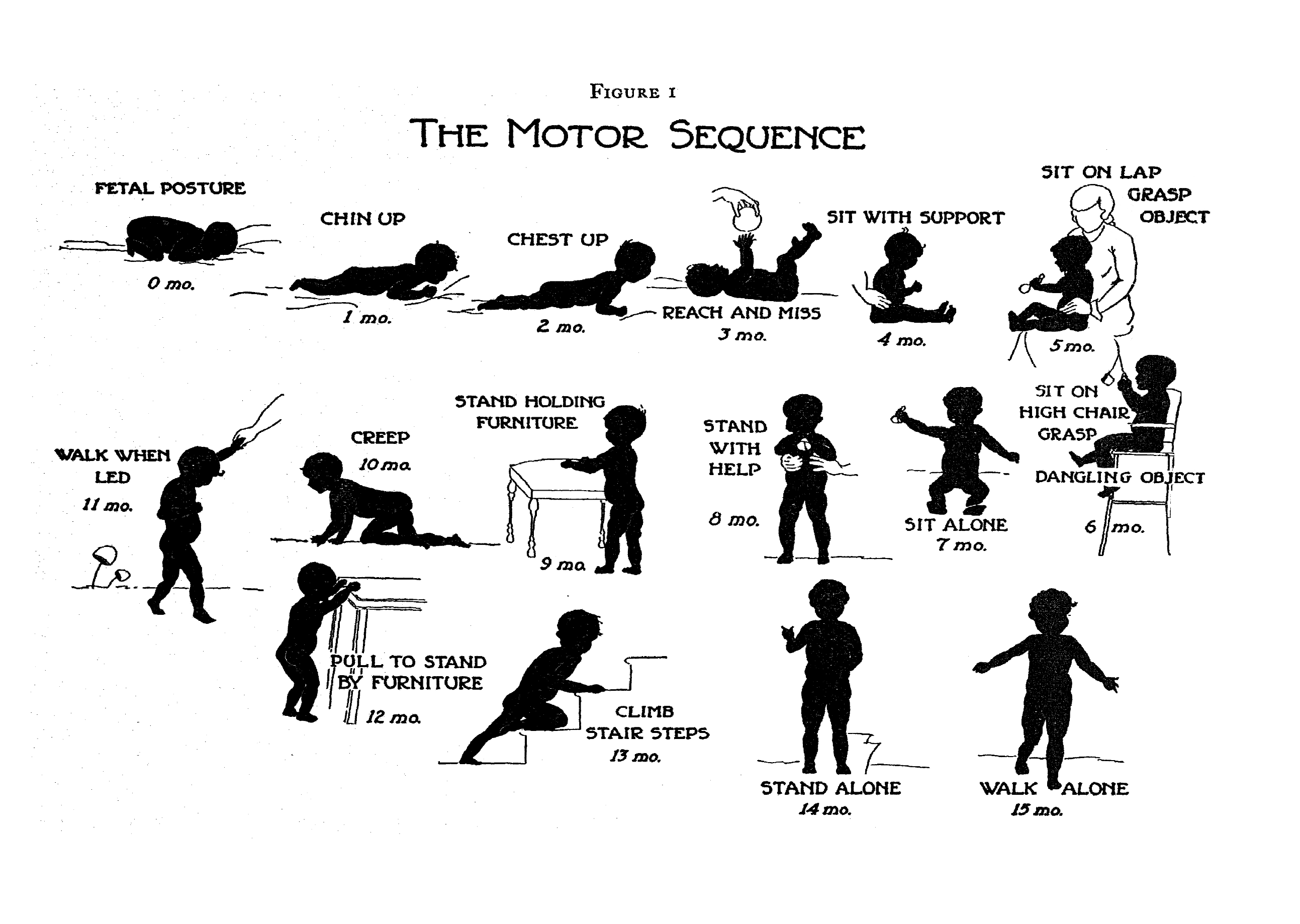2.1 What is child development?
In contrast to concepts like height or temperature, it is unclear what exactly constitutes child development. Shirley (1931) executed one of the first rigorous studies in the field with the explicit aim
that the many aspects of development, anatomical, physical, motor, intellectual, and emotional, be studied simultaneously.
Shirley gave empirical definitions of each of these domains of development.

Figure 2.1: Gross motor development as a sequence of milestones. Source: Shirley (1933), with permission.
Certain domains advance through a fixed sequence. Figure 2.1 illustrates the various stages needed for going from a fetal posture to walking alone. The ages are indicative of when these events happen, but there is a considerable variation in timing between infants.
Gesell (1943) (p. 88) formulated the following definition of development:
Development is a continuous process that proceeds stage by stage in an orderly sequence.
Gesell’s definition emphasizes that development is a continuous process. The stages are useful as indicators to infer the level of maturity but are of limited interest by themselves.
Liebert, Poulos, and Strauss (1974) (p. 5) emphasized that development is not a phenomenon that unfolds in isolation.
Development refers to a process in growth and capability over time, as a function of both maturation and interaction with the environment.
Cameron and Bogin (2012) (p. 11) defined an endpoint of development, as follows:
“Growth” is defined as an increase in size, while “maturity” or “development” is an increase in functional ability…The endpoint of maturity is when a human is functionally able to procreate successfully … not just biological maturity but also behavioural and perhaps social maturity.
Berk (2011) (p. 30) presented a dynamic systems perspective on child development as follows:
Development cannot be characterized as a single line of change, and is more like a web of fibres branching out in many directions, each representing a different skill area that may undergo both continuous and stagewise transformation.
There are many more definitions of child development. The ones described here illustrate the main points of view in the field.